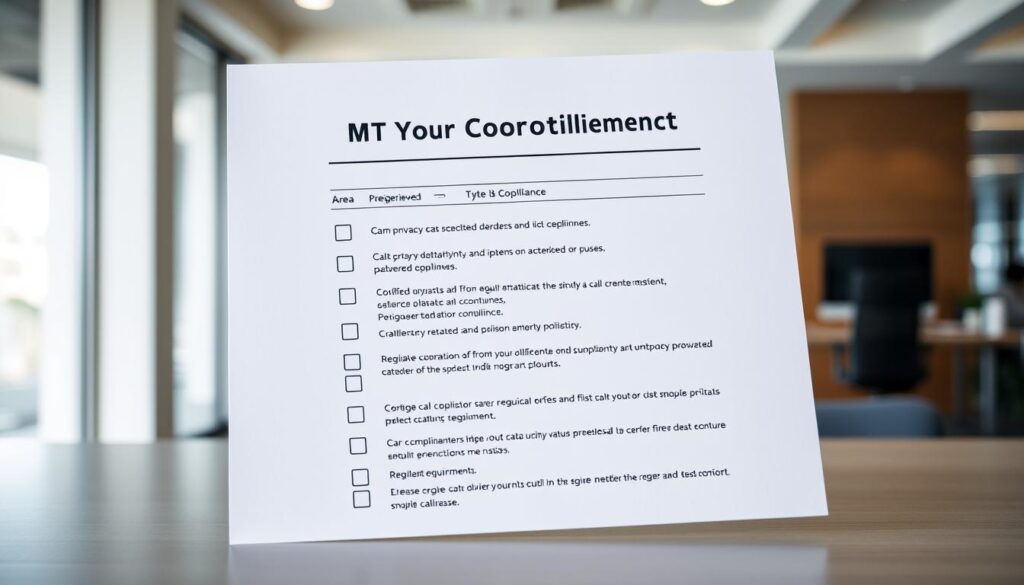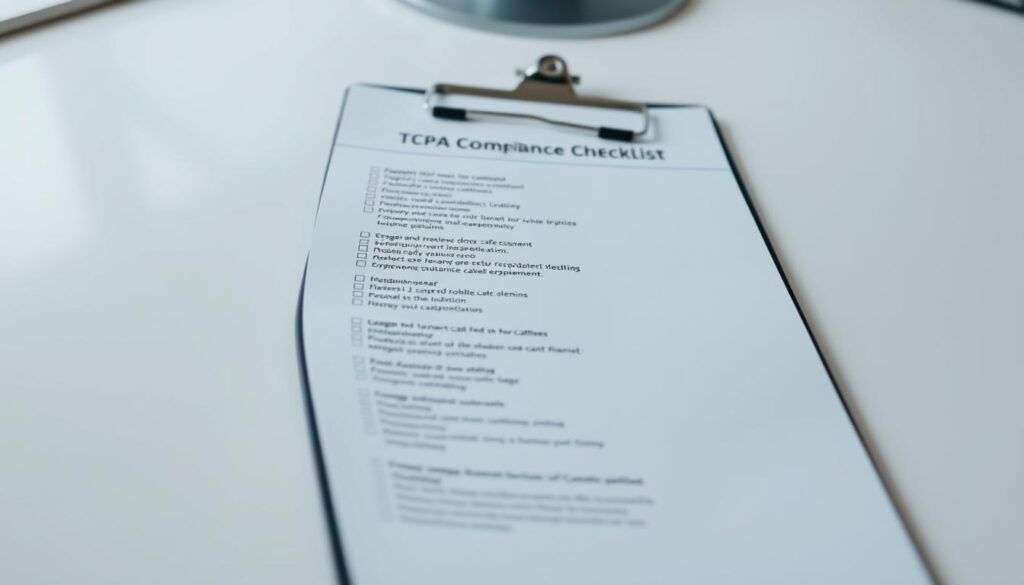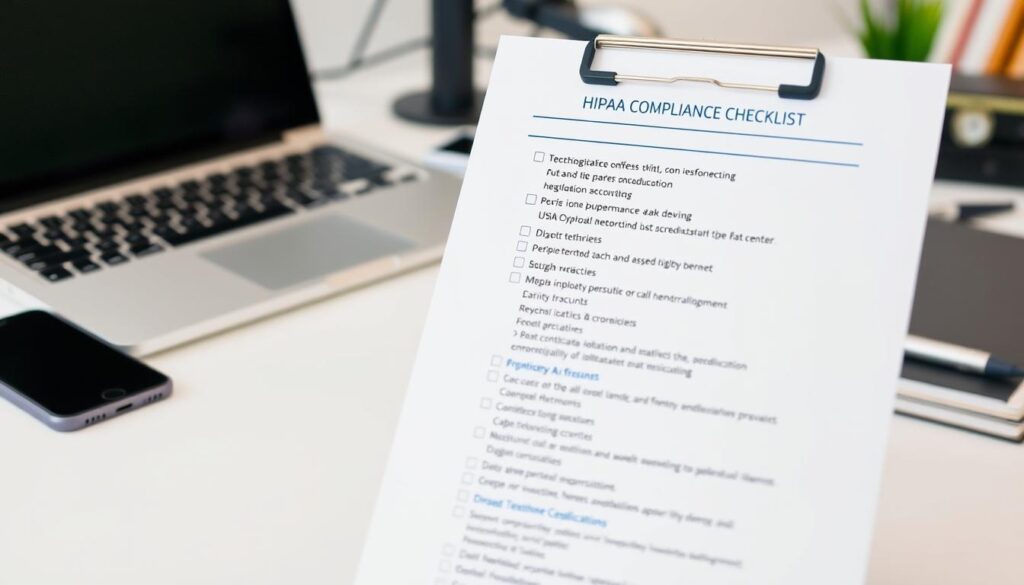Did you know businesses face over $3 billion in fines annually for violating telemarketing and data privacy laws? As customer interactions grow more digital, maintaining adherence to regulations isn’t optional—it’s survival.
Modern organizations must navigate a maze of rules like GDPR, TCPA, and HIPAA. These frameworks protect sensitive information while dictating how teams handle consumer communications. One misstep can trigger lawsuits, operational shutdowns, or irreversible brand harm.
This guide simplifies complex requirements into actionable steps. Learn to implement monitoring systems, train staff effectively, and integrate security protocols seamlessly. Beyond avoiding penalties, proper practices build customer trust and streamline workflows.
Remember: Rules evolve constantly. Last year alone saw 15 new state-level privacy laws in the U.S. Staying ahead requires proactive strategies, not reactive fixes. Let’s transform regulatory challenges into competitive advantages.
Introduction to Call Center Compliance
Operating within legal boundaries isn’t just about avoiding fines—it’s the cornerstone of customer trust. Every conversation and data transaction must align with strict standards that protect both businesses and consumers.

Defining Compliance in the Call Center Environment
Regulatory adherence means following every rule that applies to customer interactions. This includes federal laws, state requirements, and industry-specific guidelines. Partial implementation doesn’t work—organizations either meet all standards or risk penalties.
Modern operations face layered challenges. A healthcare contact center follows different rules than a financial services team. Yet both must track consent, manage sensitive details, and update protocols as laws change.
The Role of Data Privacy and Security Regulations
Privacy rules dictate how organizations collect and store personal information. Security measures like encryption and access controls prevent breaches. Together, they create a shield around customer data.
These requirements also build market advantages. Clients prefer working with companies that prioritize protection. Proper implementation reduces operational risks while strengthening brand reputation in competitive industries.
Overview of Data Privacy and Security Regulations
Global businesses now navigate over 130 privacy laws across different regions—a 300% increase since 2010. This complex web of rules reshapes how organizations manage sensitive information, particularly in customer-facing operations.

Understanding Key Legal Frameworks
The GDPR sets strict standards for handling EU citizen data. It mandates explicit consent before collecting details and requires breach notifications within 72 hours. Companies face fines up to 4% of global revenue for violations.
In the U.S., state laws add layers of complexity. California’s CCPA grants residents rights to delete personal data and opt out of sales. Updated CPRA rules introduced stricter penalties in 2023 for mishandling sensitive information like biometrics.
Industry-specific regulations further tighten controls. Healthcare teams follow HIPAA’s encryption requirements for patient records. Financial institutions use GLBA to safeguard account numbers and Social Security digits during calls.
Three principles unify these frameworks:
- Lawful data collection with clear purposes
- Minimal storage of sensitive details
- Regular audits to ensure accuracy
New laws in Colorado, Virginia, and Utah take effect in 2025, requiring real-time adjustments to compliance strategies. Proactive monitoring tools help teams track regulatory shifts across operating regions.
Telephone Consumer Protection and Do-Not-Call Standards
The TCPA reshaped consumer rights in 1991 by putting power back in customers’ hands. This landmark legislation targets intrusive telemarketing tactics, requiring organizations to prioritize permission-based communication. With $1,500 penalties per violation, understanding these rules isn’t optional—it’s essential for sustainable operations.

TCPA Requirements and Best Practices
Prior express written consent forms the foundation of TCPA adherence. Teams must document when and how customers agreed to receive mobile calls or automated messages. This applies doubly when using prerecorded voices or dialing systems—even a single unapproved contact risks lawsuits.
The National Do Not Call Registry blocks marketing outreach to over 240 million numbers. Exceptions exist for charities and existing client relationships, but organizations must scrub lists against the registry monthly. Time restrictions add another layer: calls outside 8 a.m.–9 p.m. local time violate consumer protection rules.
Recent court rulings expanded autodialer definitions to include most modern dialing tools. Operations using CRM platforms or cloud-based systems now face stricter scrutiny. Regular staff training and real-time consent verification prevent accidental breaches during campaigns.
Three strategies minimize risks:
- Centralized systems tracking opt-outs across all channels
- Automated time-zone detection for scheduling calls
- Quarterly audits of consent records and dialing practices
Fair Debt Collection and Consumer Protection Practices
The Fair Debt Collection Practices Act transformed consumer rights in 1978 by outlawing aggressive tactics used to recover debts. This landmark law shields individuals from harassment while establishing clear guidelines for ethical debt collection processes. Organizations must balance assertive recovery efforts with strict adherence to consumer protection standards.

Key Aspects of the FDCPA
Collectors face specific time restrictions—contacting customers before 8 a.m. or after 9 p.m. violates the practices act unless prior consent exists. The law bans threats, obscene language, and false claims about legal actions. Agents can’t discuss debts with third parties except to confirm contact details.
Debt validation rules require providing written notices within five days of initial contact. These documents must include:
- Exact amount owed
- Original creditor’s name
- Clear dispute instructions
Consumers gain 30 days to challenge debt validity. Collection activities must pause until verification occurs. Proper documentation helps avoid accidental breaches during high-volume operations.
Ensuring Transparent Consumer Communications
Agents must identify themselves and state the call’s purpose immediately. Scripts should explain payment options without pressuring customers. Training programs teach teams to handle disputes calmly and document interactions accurately.
Violations carry steep penalties—up to $1,000 per incident plus class-action risks. Automated systems track call times and opt-out requests, while supervisors review recordings weekly. Transparent collection practices build trust and reduce legal exposure in competitive markets.
HIPAA and Health Information Security
The healthcare sector’s digital interactions operate under one of America’s strictest privacy frameworks. Organizations handling medical data must balance service efficiency with ironclad protection of sensitive records. Three elements define success: technical safeguards, staff education, and airtight legal agreements.

Securing Patient Data in Healthcare Operations
Multi-step verification processes prevent unauthorized access to health information. Agents confirm identities using knowledge-based questions before discussing treatment details. Encrypted communication channels and access logs create digital trails for audits.
Business Associate Agreements outline responsibilities for protecting protected health information (PHI). These contracts mandate breach notifications within 60 days and regular system vulnerability tests. Storage solutions must meet health insurance portability standards for data encryption at rest and in transit.
Building Competency Through Specialized Training
Quarterly workshops teach teams to recognize phishing attempts and secure physical workstations. Role-playing exercises simulate scenarios like verifying insurance details without exposing full policy numbers. Employees learn to redact unnecessary customer information from call notes automatically.
Penalties escalate quickly for violations—up to $50,000 per incident with potential criminal charges. Documentation proves essential during audits. Organizations maintain records of staff certifications, system updates, and third-party vendor assessments to demonstrate insurance portability accountability.
Gramm-Leach-Bliley Act (GLBA) and Financial Data Security
Financial institutions handling sensitive account details operate on a bedrock of legislated trust. The GLBA reshaped U.S. finance in 1999 by mandating ironclad protection for personal banking information. Teams servicing banks or credit unions must treat security as non-negotiable—not just technical teams, but every employee touching customer data.
Gatekeeping Financial Information
Access controls form the first defense against breaches. Multi-factor authentication and role-based permissions ensure only authorized staff view account numbers or Social Security digits. Regular access reviews prune outdated privileges, while automated logs track every interaction with financial records.
Encryption acts as the final safeguard. GLBA requires scrambling data during storage and transmission. This dual-layer approach blocks hackers from intercepting details during calls or decrypting stolen databases.
Annual audits verify adherence to these standards. Third-party assessments identify vulnerabilities before criminals exploit them. Combined with ongoing staff training, these measures transform data security from checkbox exercises into competitive differentiators.
Proper implementation does more than avoid fines—it demonstrates respect for customer trust. In an era of digital banking, robust protections become the silent sales pitch that retains clients.
FAQ
What are the core regulations impacting call center data privacy?
How does HIPAA affect handling patient information during calls?
What penalties exist for violating Do-Not-Call registry rules?
FAQ
What are the core regulations impacting call center data privacy?
Key frameworks include the Telephone Consumer Protection Act (TCPA), Fair Debt Collection Practices Act (FDCPA), Health Insurance Portability and Accountability Act (HIPAA), and Gramm-Leach-Bliley Act (GLBA). These laws govern consent, communication practices, and safeguards for sensitive health or financial details.
How does HIPAA affect handling patient information during calls?
HIPAA mandates strict protocols for securing protected health information (PHI). Agents must verify identities, avoid unauthorized disclosures, and use encrypted systems. Regular training ensures staff understand breach prevention and proper data handling.
What penalties exist for violating Do-Not-Call registry rules?
TCPA violations can lead to fines up to $1,500 per unsolicited call. Organizations must scrub numbers against federal and state registries, maintain internal opt-out lists, and document consent to avoid legal risks.
Why is transparency critical under the FDCPA?
Debt collectors must clearly identify themselves, disclose owed amounts, and provide validation notices. Misleading statements or harassment are prohibited. Recording calls and training agents on approved scripts help maintain compliance.
How does GLBA influence financial data security practices?
The GLBA requires safeguards like multi-factor authentication, access controls, and encryption for customer financial records. Regular audits and limiting agent access to necessary data minimize exposure to breaches.
What tools help ensure adherence to consent requirements?
Automated solutions like Five9 or Nice inContact track opt-outs, manage call recordings, and document permissions. Integrating these with CRM systems ensures real-time compliance updates during customer interactions.
,500 per unsolicited call. Organizations must scrub numbers against federal and state registries, maintain internal opt-out lists, and document consent to avoid legal risks.
Why is transparency critical under the FDCPA?
Debt collectors must clearly identify themselves, disclose owed amounts, and provide validation notices. Misleading statements or harassment are prohibited. Recording calls and training agents on approved scripts help maintain compliance.
How does GLBA influence financial data security practices?
The GLBA requires safeguards like multi-factor authentication, access controls, and encryption for customer financial records. Regular audits and limiting agent access to necessary data minimize exposure to breaches.
What tools help ensure adherence to consent requirements?
Automated solutions like Five9 or Nice inContact track opt-outs, manage call recordings, and document permissions. Integrating these with CRM systems ensures real-time compliance updates during customer interactions.


